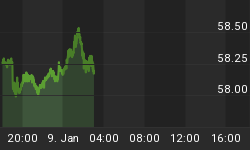Stock Market Overview
Some would think that the real driver for the stock market is the discovery that the economy is in the perfection of the "Goldilocks" mode, which was last "discovered" in late 1999 - early 2000. At the time, we thought it was a rationalization to stay long the biggest stock speculation in history. Now it is to stay long the next bubble.
On the one, the focus was tech stocks; on this one, it is industrial commodities and residential real estate. In January, 2004, Stephen Roach, at Morgan Stanley, wisely observed, "The image of the Fed as a 'serial bubble blower' is not that far fetched after all."
Our own view on this has been that the Fed has been blowing bubbles since they opened the doors in 1914 and, at some point, the world will wake up to the realization that great speculations will always occur and that it is best that central banks don't add their own speculative theories and practices to events that occur naturally and so regularly.
Last week, we used the term "Geriatric Bull Market" and would add that when the party is in full swing and the Rolling Stones "Satisfaction" is on full blast, even the oldest in the crowd can kick up their heels. We'll take this metaphor a little further by noting that the speculation is now becoming the equivalent of dancing non-stop to Bill Hailey's Rock Around The Clock, Presley's Jailhouse Rock, the Shandell's Mony Mony, Orbison's Pretty Woman, Bob Seger's Old Time Rock and Roll, and Long John Baldry's King Of Rock And Roll.
On this sequence, the market for stocks, commodities, and homes is about at the equivalent of Pretty Woman, and Orbison's line "No one can look as good as you. Mercy . . ." seems descriptive.
By this model, the excitement is high and there are only two numbers left. These could use up all the available speculative energy by mid-September.
As the saying goes, dance close to the exits - the air is usually cooler and fresher.
Technicals: For the past few weeks, we have been noting that the window for the first "chop" of the summer would close at the end of July. That model was based on the repetitive swings following a year of 52 weeks of bullish sentiment readings. Typically, this pattern held for the first 7 months and this is now over, but the correction seems "close enough".
The July 26 edition of ChartWorks introduced an overview model and this would require about 7 weeks of speculative zoom. One example given was the conclusion of the bull market in January, 1973. The zoom would include homes, industrial commodities, and the stock market. The latter two could reach upside exhaustion by mid-September.
Warnings signs would include the advent of the next phase of credit spread widening and the reversal of the treasury curve to steepening. Providing some anticipation of this is that the UK curve, from the 10-year to the 3-month, has been in a steepening trend since June 8.
Further confirmation of pending exhaustion would be provided by gold outperforming silver.
SIGNS OF THE TIMES
















